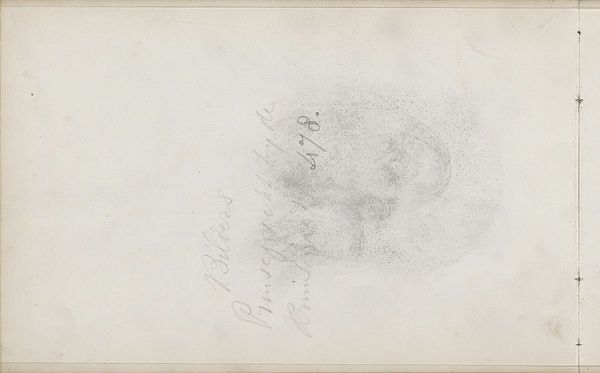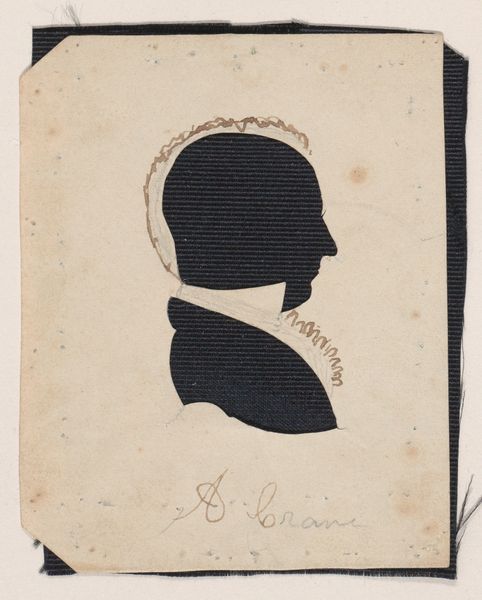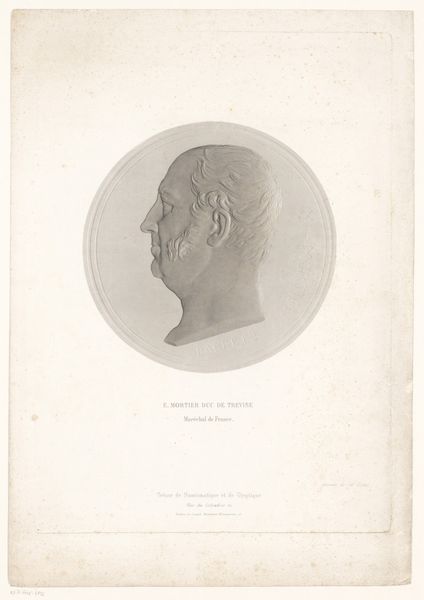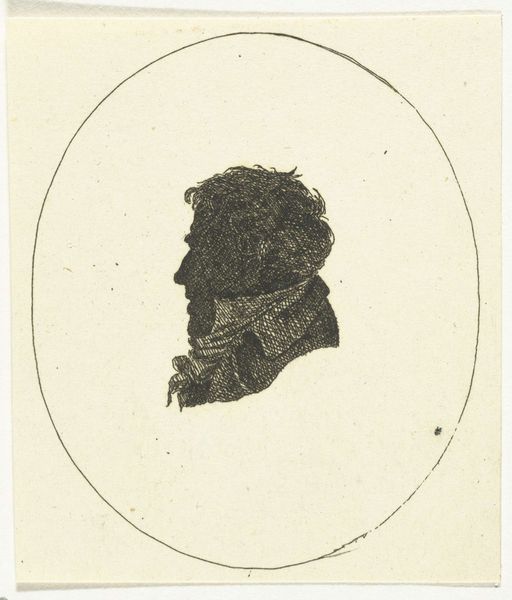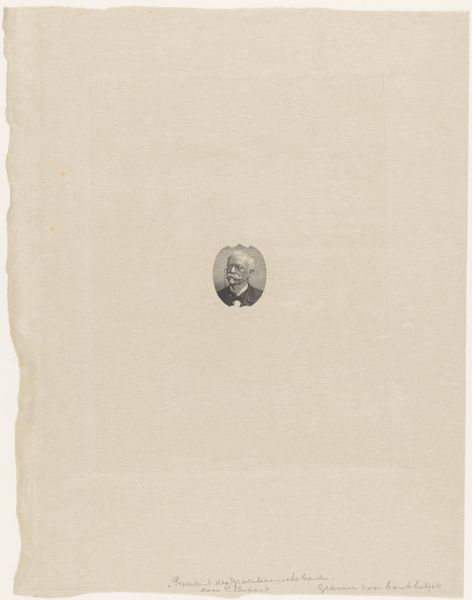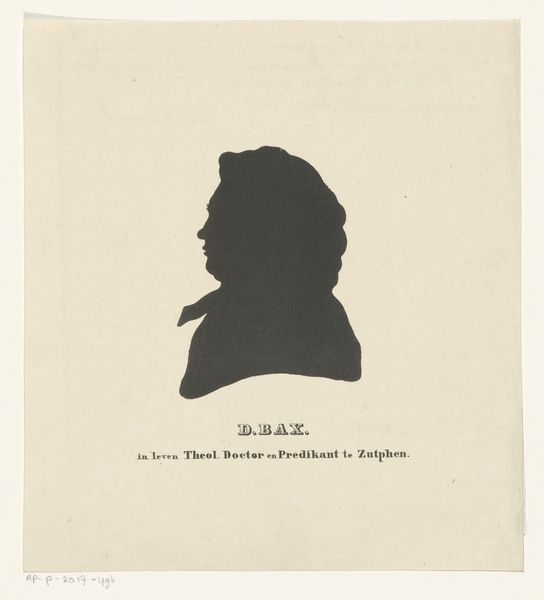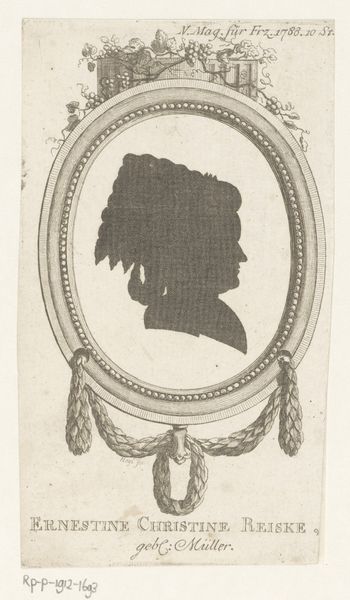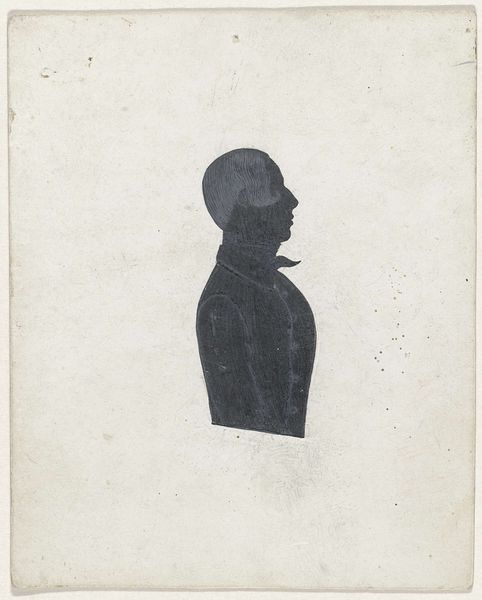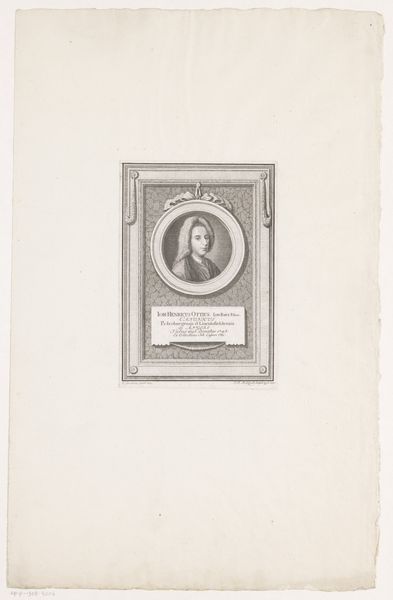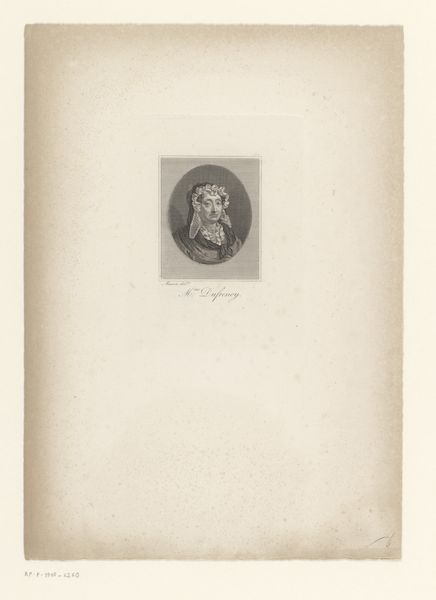
The last words of Marie Antoinette (Dernières Paroles de Marie Antoinette) 1794 - 1815
0:00
0:00
drawing, print, engraving
#
portrait
#
pencil drawn
#
drawing
# print
#
old engraving style
#
romanticism
#
history-painting
#
engraving
Dimensions: Plate: 12 11/16 × 11 5/16 in. (32.2 × 28.8 cm) Sheet: 17 11/16 in. × 12 in. (45 × 30.5 cm)
Copyright: Public Domain
Curator: This print, residing here at the Metropolitan Museum of Art, is entitled "The last words of Marie Antoinette". Attributed to J. Pelicier, though details are scarce, it’s thought to have been created sometime between 1794 and 1815, using engraving techniques. Editor: My initial reaction? Poignant, and rather haunting. It has the weight of history, doesn’t it? The texture, created by text forming the silhouette, is especially striking. It gives a strange sense of solidity to someone essentially erased by history. Curator: The interesting thing is how quickly Marie Antoinette's image was politicized following her death. Prints like this served specific agendas. By presenting her “last words” in such a direct, accessible form, it taps into the rising sentimentality and royalist nostalgia sweeping France at the time. Editor: Precisely. Text as image – it suggests the power of the written word to define memory. The very words attributed to her build her image in our minds. Notice how the letter fills her head, framing the contour of her profile as it trails off the end of the paper, seeming like an unspoken idea, maybe grief? The framing also resembles that of a classical cameo, making the image instantly culturally powerful. Curator: Indeed, this print served as a form of propaganda, seeking to recast her as a sympathetic figure rather than the extravagant, detached queen often depicted during the Revolution. These prints, cheap to produce and easily circulated, contributed significantly to shaping public perception after her death. The visual form and textual content work hand-in-hand to rehabilitate her image in a society still deeply scarred by the Revolution. Editor: The almost ghostly, sepulchral quality, makes us reconsider how even in death, imagery can continue to have an impact. She looks almost spectral, summoned through her written will as it traces her outline back into our memory. Curator: It underscores the degree to which the visual representation of historical figures is inherently political. History, perception and visual imagery are constantly influencing one another. Editor: Right. Visuals hold our collective consciousness—a responsibility and power to behold.
Comments
No comments
Be the first to comment and join the conversation on the ultimate creative platform.

